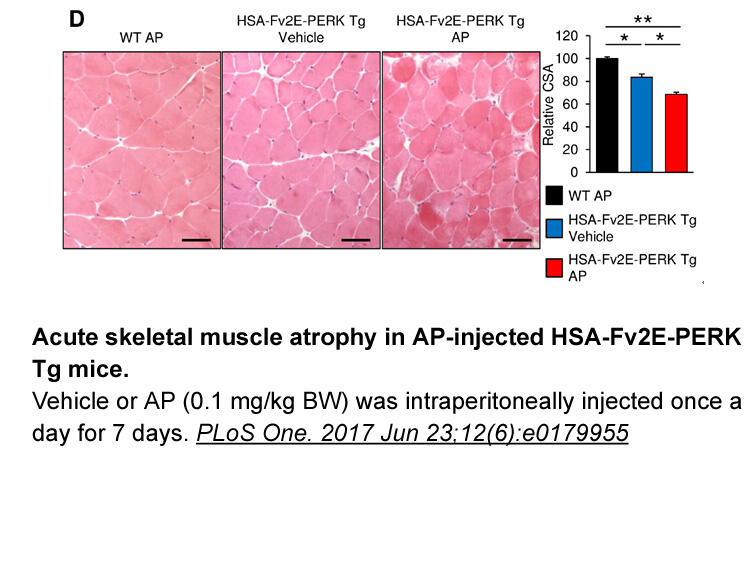Archives
Apelin is a peptide hormone and an endogenous ligand
Apelin is a peptide hormone and an endogenous ligand for a G protein-coupled receptor named APJ [7], [8], and apelin and APJ are widely expressed in human organs including hypothalamus, heart, lungs, kidneys, adipose tissue, muscles, and others [9]. Apelin is initially synthesized as a 77-amino-acid precursor, which is then cleaved to several mature forms with different lengths, such as, apelin-36, apelin-17, or apelin-13 [7]. Apelin-13 is the main form circulating in plasma, and is believed to be the most physiologically potent [10]. Apelin has been shown to be involved in the regulations of cardiovascular and fluid homeostasis, food intake, cell proliferation, and angiogenesis [11]. Apelin was also found to act as an adipokine upregulated and to be secreted by adipocytes challenged by insulin or obesity [12], [13], [14].
Apelin has a powerful glucose-lowering effect, which is associated with enhanced glucose utilization in skeletal muscle and adipose tissue in normal and obese insulin-resistant mice [15]. Moreover, chronic apelin treatment markedly improved insulin sensitivity in obese and insulin resistant mice and reduced body fat mass gain [16]. To date, apelin and APJ has been studied in adipose tissue and smooth muscle in relation to obesity and insulin resistance in mice and man [17]. However, their hepatic functions have not been well studied. APJ expression in mouse primary hepatocytes and liver tissues and in human HepG2 hepatoma lb100 have been previously confirmed [18]. In liver, the apelinergic system has been reported to play important roles in fibrosis progression and liver regeneration [19], [20], [21]. Plasma levels of apelin in healthy and liver disease patients were estimated as 282pg/mL in healthy subjects and 855pg/mL in cirrhotic patients [22].
In the present study, an in vitro model of liver X receptor (LXR)-mediated hepatosteatosis was utilized to assess the functional roles of apelin and APJ in Hep3B cells, a human hepatoma cell line, and in primary hepatocytes. Apelin-13 was used as a potent agonist [23] and apelin-13 with its C-terminal phenylalanine mutated to alanine (apelin F13A) was used as an antagonist [9], [24], [25].
Materials and methods
Results
Discussion
Plasma apelin levels have been reported to be significantly higher in non-alcoholic liver disease patients than in healthy controls [42], and in a Chinese population, a single nucleotide polymorphism in the apeline gene was found to be significantly related to diabetes mellitus [43]. In skeletal muscle, apelin-transgenic mice exhibited resistance to diet-induced obesity by increasing vascular mass and mitochondrial biogenesis [44], and apelin deficient mice displayed greater insulin-resistance when fed high-fat and carbohydrate diets [45]. These previous findings imply apelin protects against obesity and related disorders. Actually, in mature adipocytes, apelin-APJ signaling inhibits the adipogenesis of pre-adipocytes through MAPKs and lipolysis through AMPK in mature adipocytes [46], [47]. Furthermore, in the muscle tissues of insulin-resistant mice, apelin treatment was found to increase complete fatty acid oxidation, mitochondrial oxidative capacity, and biogenesis [48]. Apelin-36 levels showed a modest association with insulin resistance [49]. In clinical studies, apelin levels have been reported to be elevated in obese [12], [50] and in type 2 diabetic subjects [51]. Plasma apelin was found to be reduced in newly diagnosed and untreated patients with type 2 diabetes mellitus [52], [53]. These findings indicate therapeutic development targeting the apelin-APJ system could be therapeutically beneficial to individuals with components on metabolic syndrome, especially obesity, insulin resistance, and type II diabetes.
The present  study describes for the first time the effect of apelin on liver fat accumulation. During the present study, four important observations were made. First, apelin reduced LXR-mediated lipid accumulation in Hep3B human hepatocytes and primary mouse hepatocytes. Second, apelin inhibited LXR-induced lipogenic SREBP-1c expression and also stimulated lipolytic PPARα protein expression. Third, apelin signaling was found to be mediated via APJ-Gi/o protein and to initiate the p38 MAPK and PI3K pathways, which lead to AMPK activation and suppression of SREBP-1c expression in the early phase. Forth, apelin-induced PPARα induction in the late phase was mediated via the activations of ERK and AMPK, which lie downstream of p38 MAPK and PI3K (Fig. 12).
study describes for the first time the effect of apelin on liver fat accumulation. During the present study, four important observations were made. First, apelin reduced LXR-mediated lipid accumulation in Hep3B human hepatocytes and primary mouse hepatocytes. Second, apelin inhibited LXR-induced lipogenic SREBP-1c expression and also stimulated lipolytic PPARα protein expression. Third, apelin signaling was found to be mediated via APJ-Gi/o protein and to initiate the p38 MAPK and PI3K pathways, which lead to AMPK activation and suppression of SREBP-1c expression in the early phase. Forth, apelin-induced PPARα induction in the late phase was mediated via the activations of ERK and AMPK, which lie downstream of p38 MAPK and PI3K (Fig. 12).